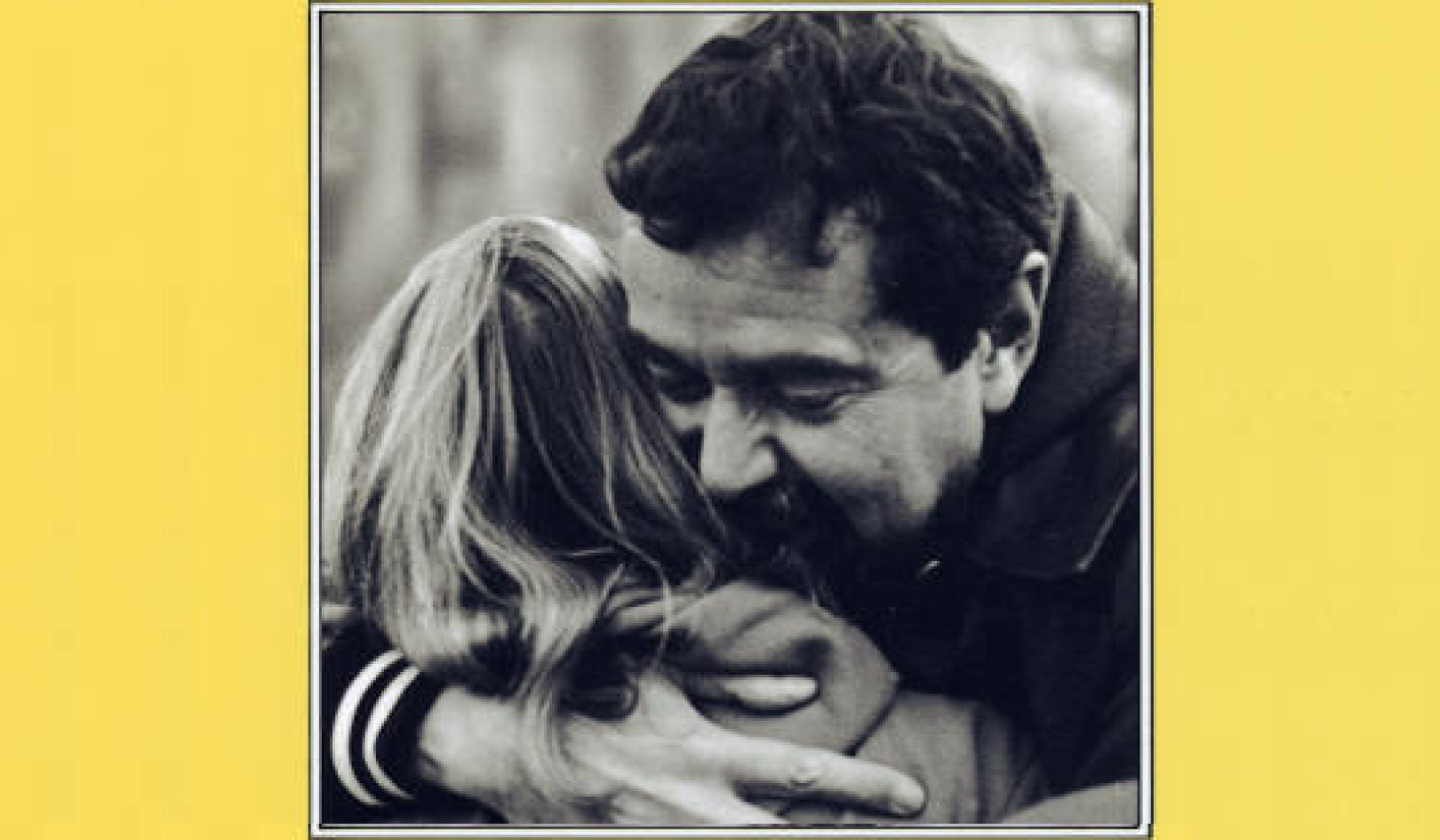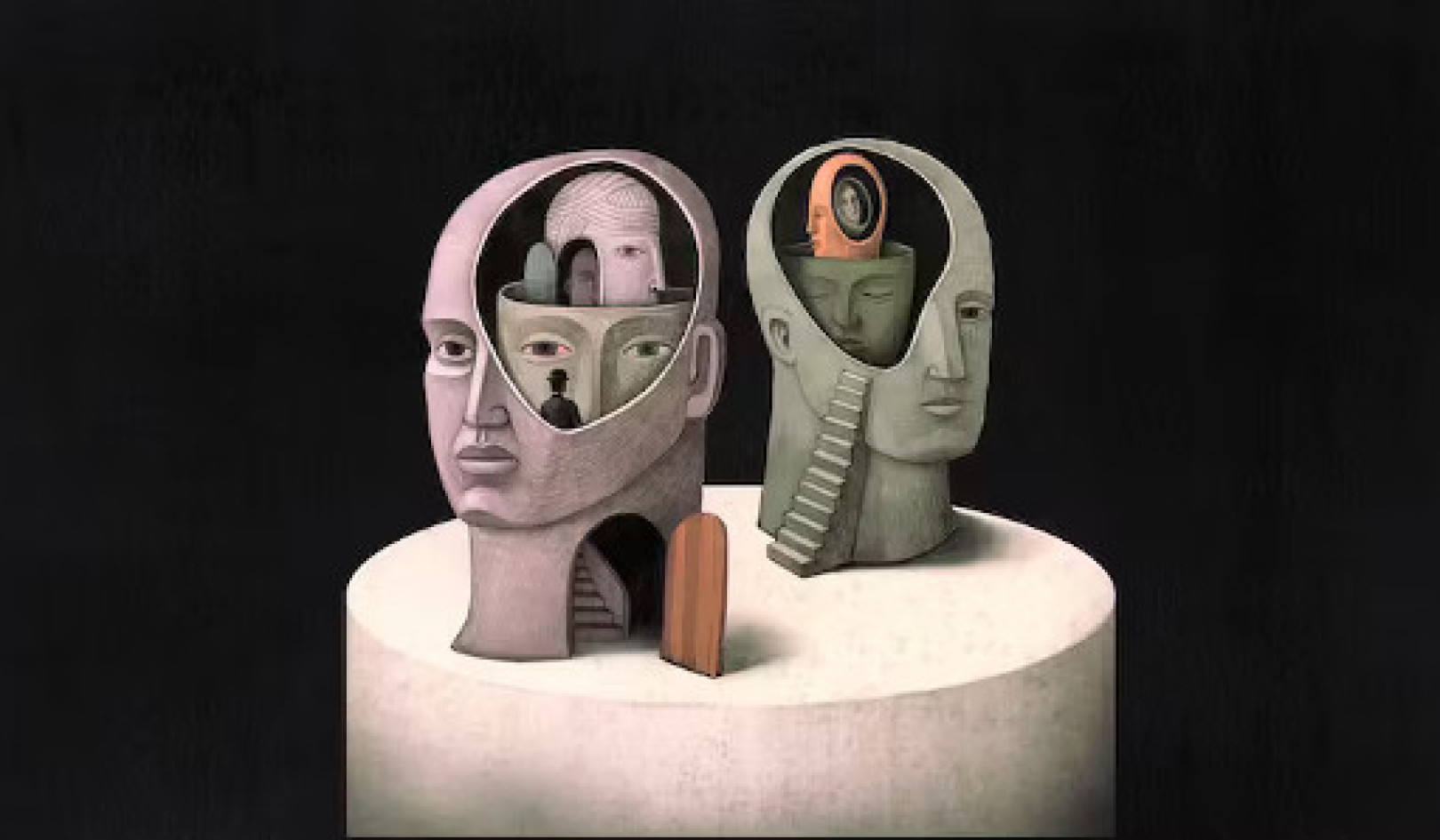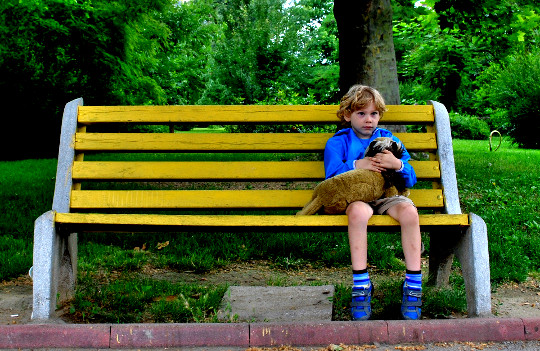
Image by Mojca-Peter
Marriage brought about some profound changes in our life together, even though we had been together for eleven years. When the honeymoon was over, in the depth of winter, my reactions to stress intensified and I found myself occasionally overwhelmed, out of my mind, acting out in ways that were damaging to our marriage. The two psychologists I had been working with had diagnosed this as the result of trauma and told me that this trauma could not be cured, it could only be managed, which was not very helpful.
Then I turned seventy...
My father had died in his seventieth year and my seventieth year represented some kind of longevity buffer to pass through. I felt my father had died early, bored and weary of life—that was my inkling. Wracked with cancer, he just stopped eating, stopped talking, turned his face to the wall, and died on the third day. But I was not there, as I had not been there for most of my father’s life, so I really don’t know.
Then I had two heart attacks...
After the heart attacks, my doctor recommended I work on the emotional component with a trauma therapist. The therapist’s approach was neurological—becoming aware of how the nervous system had been imprinted, programmed if you will, by traumatic experiences, and working with a wide array of methods to loosen, lessen, and release these frozen patterns in the neural pathways. These methods include rhythmic breathing, EMDR (Eye Movement Desensitization and Reprocessing), TAT (Tapas Acupressure Technique), and many others.
In my layman’s understanding, trauma occurs when the nervous system is overwhelmed by intense reactions, such as fear or terror, to severely distressing events, and the stress is more than the nervous system can cope with. One is unable to integrate the emotions generated by the stress. One has to dissociate (disidentify, often literally leave the body) in order for a sense of self to survive.
The extreme (traumatic) emotions imprinted on the nervous system then remain unconscious until similar emotions are stimulated by stress in present time and a traumatic response bursts forth with a vengeance, with an intensity far out of proportion to present events. So, there is the original traumatic event, recurring traumatic events throughout life repeating and amplifying the original trauma, and traumatic stress reactions in present time.
Trauma Stimulated in Present Time
When my trauma is stimulated in present time, I am overwhelmed with fear, terror, rage, and despair, all jumbled together. I can’t think things through. I am out of my mind. I don’t know what I am saying. My nervous system is flooded with chemicals that demand flight (there must be somewhere out of here!), fight (pacing around the house, shouting and yelling), and ultimately freeze (mute, defeated, senseless paralysis). This trauma is debilitating, humiliating, and, worst of all, harmful to the one I love.
Forty years ago, when my mother told me I was a horrible baby, howling and screaming for the first three months of my life, I was surprised. I had always thought I was the golden child—everyone was so happy to see me and my mother loved me my whole life. She had been a horrible mother at first, but neither of us knew it.
As an infant I had been left alone much of the time, hungry, crying, starving, howling and screaming, angry, terrified, and ultimately numb and dissociated. Decisions were made in my soul, not conscious rational decisions, but intentional resolves in my newly embodied soul.
- I am all alone.
- No one is holding me.
- I am hungry.
- There is no one feeding me.
- There is no way to get fed.
- There is no help.
- I ask for help but no one comes.
- I can’t ask for help.
- Nobody is here for me.
- I’m not going to need anybody.
- I can’t ask for what I want.
- I can’t get what I want.
- Asking for what I want seems to push away what I want.
- It’s better not to want anything at all.
- Exhausted, I suffer in silence.
I feel myself as a little boy, age three or four, locked in his room, yelling and screaming, enraged at not being seen, not being known for who he is—playful, creative, fun—enraged at being shut up, locked up, dignity wounded, vowing, “I’ll never do this to anyone.”
The Defense Mechanism
I remember arriving at a decision to suppress my energy, rage, and enthusiasm in order to be fed and survive. I remember the decision to go into hiding, to pretend, to be well behaved, not to let them know who I am. I remember the decision to suppress my throat and not give voice to the feelings in my body, to let my mouth express only the thoughts in my mind.
I pretended that I forgot, and then I forgot that I pretended. I chose to become invisible to my world, my parents and my teachers, and then became invisible to myself. I developed a personality as a bright empty intellect, composed of ceaseless chatter, knowing it all and feeling as little as possible.
So here it is—the traumatic imprint of the first three months, then the first three years, of my life, which has structured and defined my entire life journey, which structured and limited the choices I was able to make, which lay behind everything, unseen and unknown, until MaryRose dared to love this reclusive, stoic astrologer, who dared to love her in return, and over time everything that was hidden came into the light.
The Healing Continues, The Journey Goes On.
Right now, all I can say is that I have a lot more space to allow her to be who she is without reacting so strongly—and that this has made space for more peace and more love in our lives.
This was the beginning of my inner life—not infant bliss but infant dissociation.
We live in two worlds: the inner world and the outer world. These worlds overlap and interpenetrate each other. These two worlds project on and reflect each other. Yet each world has its own logic, its own dynamics, and its own laws, so to speak.
The Inner Eye, The Outer Eye
We see with two eyes: the inner eye and the outer eye. In order to live fully we need to develop, as Pir Vilayat said, stereoscopic vision, or, as Murshid Sam bluntly put it, controlled schizophrenia. The inner life is always present, always alive, coexistent with, distinct from, yet interpenetrating, the outer life. Yet for the most part, attention is on the outer life in the world.
After the grandiose dreams and fantasy play of childhood, my attention was focused on the outer world of school, sports, homework, and family dynamics. Only in adolescence did I become aware that part of my consciousness was discontinuous with consensual outer reality, that there was a self-arising, independent, authoritative mentation within me.
While sitting and sipping cocktails with my family in the backyard on a balmy summer evening, I had become aware of blood calling out from the earth, the blood of Native Americans slaughtered, the lives of black slaves sacrificed, so that we could sit in the shade and get a buzz on. Who could I tell this to?
No one was going to validate my inner world. In fact, I soon found out that the expression of my knowingness was considered subversive and unacceptable. My father would call me into his den for long serious talks after dinner. He would try to educate me in history, politics, and economics, to the point where I would become bored. When he asked me what I was thinking and I told him, his standard response was, “I think you’re crazy.” I learned to keep my thoughts to myself.
I wrote down my thoughts and feelings extensively in diaries and journals. My journal writing—vital, vernacular, vulgar, enthused, stream of consciousness—came to an abrupt end one day when my father violated the privacy of my room, read what he needed to read of my journals, confiscated and destroyed them all—along with my love and trust in him.
Despite the atmosphere of paternal repression and censorship, there developed a very rich if submerged and inarticulate inner life, along with my sisters who tried so hard but at times could not contain their giggling and laughter from bursting forth during the solemnity of dinner time.
Where We Focus: In or Out?
My experiential reality is largely a matter of where and how I focus my attention. When focused solely on the external world, I find myself trapped in what seem to be endless cycles of suffering and self-replicating economies of conflict, futility, and despair: samsara . . . dunya . . . let alone the inevitable old age, sickness, and death, which we do our best to ignore.
Suzuki Roshi said, “Life is like stepping onto a boat that is about to sail out to sea and sink.”
We don’t want to look at that. In every age and in every condition, the single most valuable thing one can do is to take time to be alone with oneself outside of social influences, whether through meditation, retreat, solitude, or wandering, to let oneself know the silence of the inner life.
I wasn’t born to be a hippie, spiritual or otherwise. I was born to be an investment banker, seduced by the muse in my youth, but eventually coming to my senses and perpetuating my genes in the good life in suburban Baltimore. But a massive wave of spiritual awakening swept through the post-war world in the sixties and seventies, and I was a sparkle in that wave. Ancient streams of blessing were flooding into the post-industrial West.
The Buddhist concept of enlightenment and the high of smoking marijuana came into my life at the same time, and for a while they seemed to be the same. I had no teacher or guide other than my friends. I learned that nirvana was “a place or state characterized by freedom from or oblivion to pain, worry, and the external world,” which seemed to be precisely the result of getting high.
Time stopped, mind stopped, vision and hearing were acute, everything appeared as it really was, infinite . . . for a moment. Nirvana is “a blowing out,” and getting high blows the mind . . . for a moment, a split second in eternity . . . until the music starts singing, the muse starts chanting, and ultimately . . . until the munchies come on with a vengeance. Although getting high was initially liberating, it turned out to be an addictive trap that it took me way too long to get out of.
Yearning for Love
Ram Dass and the Maharaj-ji satsang welcomed me into a love I had been yearning for my whole life. What attracted me was not the philosophy or the mythology. The whole gestalt of guru yoga, Sanskrit chants, and blue-skinned, dewy-eyed multi-armed deities was strange to me—but the love I could feel was for real, the love, the joy, and the peace. Despite my skeptical mind, I experienced God as a living reality, living within and among us just as Jesus promised, and my heart blossomed.
The way given was to love, serve, and remember God always and everywhere. The methods given were to quiet the mind and open the heart through meditation, devotional chanting, and selfless service (seva). This path and these methods remained constant throughout all my years at Lama Foundation, with my further initiation into the Chishti Sufi path through Pir Vilayat Khan and Murshid Samuel Lewis, into the practices of divine remembrance (zikr), invocation of the divine names (wazifahs), and the ecstatic Dances of Universal Peace.
Love Comes to Town
But when love came to town, and for the first time in my life someone loved me deeply, passionately, and truly, and that someone, MaryRose, was a practicing depth psychologist, I found that I finally had to engage in long-neglected personal work on my emotional complexes. For starters, I had to get out of my head, get in touch with my feelings, and learn how to communicate my feelings to my beloved. This may sound simple, but for me it was not.
I had been seeking love, lover, and beloved my whole life, and coming up against what I took to be my own inability to love, time and time again, until finally I just gave up. I couldn’t get what I wanted, so I resolved not to want what I wanted and that left me very unhappy, or very stoically “content.” I learned to live with unfulfilled desire. Dissociation, defiance, deception, and repression may have been necessary strategies for getting through childhood with some authenticity intact (and well-hidden), but these habit patterns were disastrous obstructions to loving another person. My ingrained sarcastic responses undermined me at every turn.
Opening the Way to Love
Marriage is the belief system I subscribe to now, monogamy with my wife, who loves me and opens the way for me to love her. Ours is not a young marriage for creating a family. Ours is a mature marriage for bringing soul into the world, for polishing the mirror of the heart, and trusting each other when one says, “Hey! It looks like you missed something there!”
I cannot see my own blind spots without the reflection of someone I know loves me and sometimes sees what I cannot. We definitely have a subscription to each other’s issues, along with devotion to similar spiritual practices.
In order to have experience, the soul can and does identify with whatever is presented to it and whatever form it finds itself in.
What I experience as reality at any one moment is largely a result of where and how I focus my attention.
Letting Go of Experiences
Hart says that moksha, which is usually translated as liberation, means the ability to let go of experiences. Without letting go of experiences we cannot have new experiences. We just keep on recycling the same old same-old. When we can let go of experiences, we can have new experiences.
Hold on tightly and let go lightly. -- Ram Dass
Friends, we are all on the journey; life itself is a journey. No one is settled here; we are all passing onward, and therefore it is not true to say that if we are taking a spiritual journey we have to break our settled life; there is no one living a settled life here; all are unsettled, all are on their way. -- Hazrat Inayat Khan
Copyright ©2018, 2023. All Rights Reserved.
Adapted with permission of the publisher,
Inner Traditions International.
Article Source: Riding the Spirit Bus
BOOK: Riding the Spirit Bus: My Journey from Satsang with Ram Dass to Lama Foundation and Dances of Universal Peace
by Ahad Cobb.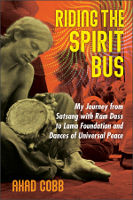 Offering a poignant reflection on life lived from the inside out, and the delicate balance between spirituality and psychology, this memoir leads readers on an outer and inner journey steeped in poetry, music, astrology, and spiritual practice in the context of community that is devoted to awakening.
Offering a poignant reflection on life lived from the inside out, and the delicate balance between spirituality and psychology, this memoir leads readers on an outer and inner journey steeped in poetry, music, astrology, and spiritual practice in the context of community that is devoted to awakening.
Click here for more info and/or to order this paperback book. Also available as a Kindle edition.
About the Author
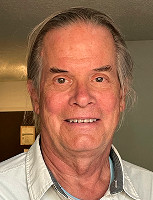 Ahad Cobb is the author, editor, and publisher of six books, including Image Nation and Early Lama Foundation. A musician and leader of Dances of Universal Peace, he has also served as a continuing member, officer, and trustee of the Lama Foundation. He studies and teaches Jyotish (Vedic astrology).
Ahad Cobb is the author, editor, and publisher of six books, including Image Nation and Early Lama Foundation. A musician and leader of Dances of Universal Peace, he has also served as a continuing member, officer, and trustee of the Lama Foundation. He studies and teaches Jyotish (Vedic astrology).
More Books by the author.























